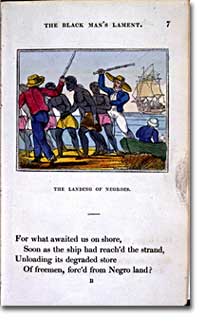
22. Social Change and National Development

Artist John Rubens Smith was taken with the physical transformation that occurred as the United States began to mature. This picture was one in a large series of the almost-finished Capitol in Washington D.C.
The United States changed dramatically in its first half century. In 1776 the U.S. consisted of thirteen colonies clustered together on the eastern seaboard. By 1821 eleven new states had been added from Maine to Louisiana. This geographic growth and especially the political incorporation of the new states demonstrated that the United States had resolved a fundamental question about how to expand. This growth not only built upon the Louisiana Purchase, but included military intervention in Spanish Florida which the United States then claimed by treaty in 1819.
The new shape of the nation required thinking about the United States in new ways. For instance, a classic text on American geography in 1793 taught that the United States was composed of three basic divisions: northern, middle, and southern. But the 1819 edition of that same book included a new region because western states and territories needed recognition as well. By 1820, over two million Americans lived west of the Appalachian Mountains.
The growing regional distinctiveness of American life was complex. Four basic regions with distinct ways of life had developed along the eastern seaboard in the colonial period. Starting in the north, they were New England (New Hampshire, Massachusetts, Rhode Island, and Connecticut); the Mid-Atlantic (New York, New Jersey, and Pennsylvania); the Chesapeake (Delaware, Maryland, and Virginia); and the Lower South (the Carolinas and Georgia). As people from these regions joined new immigrants to the United States in settling the west, they established additional distinctive regions that combined frontier conditions with ways of doing things from their previous places of origin.

The institution of slavery was a target for many of the Bible and Benevolent Societies that formed in the early 19th century. This image, taken from a children's book, depicts treatment on a slave ship and the inhuman conditions abducted Africans faced.
The newly settled western lands of this period can be grouped in several ways, but four basic divisions were most evident: the border area (Kentucky and Tennessee, the first trans-Appalachian states to join the nation), the Old Northwest (Ohio, Indiana, and Illinois), the Old Southwest (Alabama and Mississippi), and the trans-Mississippi River west (Louisiana and Missouri).
The new shape of the nation reflected much more than just physical expansion. This period also witnessed dramatic economic and religious changes. A new capitalist economy enormously expanded wealth and laid the foundation for the Industrial Revolution that flourished later in the 19th century. The great opportunities of economic development also brought new hardships for many people, especially those who toiled as slaves under the startlingly new system of cotton slavery that boomed in the early 19th century.
A dynamic religious movement known as the Second Great Awakening also transformed the nation in this period. Although springing from internal spiritual convictions, the new character of American Protestantism in the early 19th century reinforced the modern economic and political developments that created the new nation by the end of the 1820s.
The United States had claimed political independence in 1776, but its ability to make that claim a reality required at least another fifty years to be fully settled. The War of 1812, however fitfully, had demonstrated American military independence, but breaking free of the economic and cultural dominance of Great Britain would prove to be longer and more complicated struggles. In 1823 when President Monroe declared that the entire western hemisphere is "henceforth not to be considered as subjects for future colonization by any European powers," it was a claim made without the power to back it up. Although his Monroe Doctrine became a central plank of U.S. foreign policy only at the end of the century, Americans had clearly fashioned a bold new national identity by the 1820s.






